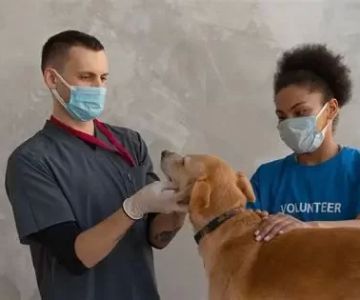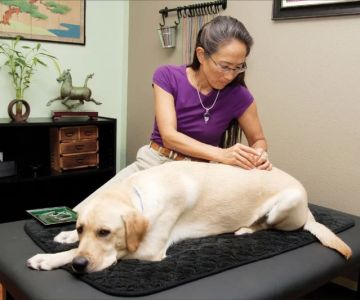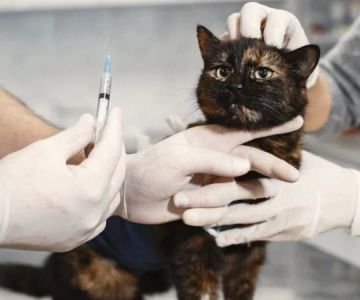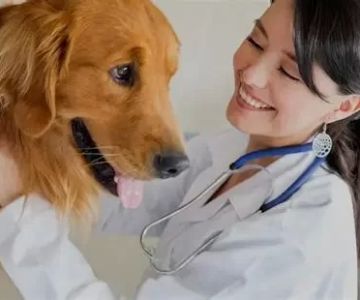What Degree is Required to Become a Veterinarian?
Becoming a veterinarian is a rewarding and impactful career choice, but it requires a significant amount of education and training. In this article, we will explore the steps and degrees required to become a veterinarian, breaking down the education process and what to expect along the way.
1. Understanding the Role of a Veterinarian
Before diving into the degrees and education, it’s essential to understand the role of a veterinarian. Veterinarians are responsible for diagnosing, treating, and preventing diseases in animals. They play a crucial part in ensuring the well-being of both domestic pets and livestock. Veterinarians also work in research, wildlife conservation, and public health, providing an extensive range of services in both clinical and non-clinical settings.

19507 Interstate 45 N STE 700, Spring, TX 77388, USA
See Details2. The Undergraduate Degree: Laying the Foundation
The first step toward becoming a veterinarian is earning a bachelor’s degree. Although some schools offer pre-veterinary programs, it is not mandatory to major in animal science or biology. However, students should take courses that cover biology, chemistry, physics, and mathematics to prepare for the next steps in veterinary school. Pre-veterinary programs focus on the foundational knowledge needed in veterinary medicine.
Most veterinary schools have specific undergraduate course requirements. Having a strong academic background in the sciences can improve your chances of being accepted into a veterinary program. Although some students may enter veterinary school directly after completing a bachelor’s degree, others may take a gap year or more to gain practical experience, which is also highly valued by admissions committees.
3. Veterinary School: The Core of Your Education
To become a licensed veterinarian, you must attend a veterinary school accredited by the American Veterinary Medical Association (AVMA). Veterinary programs typically last four years and lead to a Doctor of Veterinary Medicine (DVM) degree. The curriculum in veterinary school is rigorous and covers subjects such as anatomy, physiology, pharmacology, pathology, and animal behavior.
In addition to classroom instruction, veterinary students also participate in clinical rotations, where they work with live animals under the supervision of experienced veterinarians. This hands-on experience is essential for gaining the practical skills needed to diagnose and treat animals. Veterinary school also requires significant clinical and laboratory work to ensure that students are fully prepared for the demands of the profession.
4. Licensure and Certification: Becoming Official
After earning a DVM degree, you must pass a licensing exam to practice veterinary medicine in the United States. The most common exam is the North American Veterinary Licensing Examination (NAVLE), which is administered by the International Council for Veterinary Assessment. The NAVLE tests your knowledge of animal health and veterinary practices, and passing this exam is necessary for licensure.
In addition to the NAVLE, many states require additional exams or clinical experience. Some veterinarians may also choose to pursue certification in a specific area of veterinary medicine, such as surgery, dermatology, or cardiology, to further their expertise and expand their career opportunities.
5. Continuing Education: Lifelong Learning
Veterinary medicine is a constantly evolving field, and veterinarians must engage in lifelong learning to stay current with new advancements. Continuing education is required in most states to maintain licensure. Veterinarians can attend conferences, workshops, or participate in online courses to keep their skills and knowledge up to date.
Staying informed about new treatments, medications, and technologies is essential for providing the best care to animals. Many veterinarians also choose to specialize further by completing residency programs or advanced certifications in their area of interest, allowing them to treat more complex cases or focus on specific animal populations.
6. Gaining Experience: The Path to Success
While formal education is crucial to becoming a veterinarian, hands-on experience plays an equally important role. Gaining practical experience early in your career can set you apart in a competitive job market. Many veterinary students gain experience through internships, externships, or volunteering at animal shelters, wildlife organizations, or research facilities.
Real-world experience allows you to refine your skills, build a professional network, and get exposure to different areas of veterinary medicine. Whether working in private practices or veterinary clinics, experience will help you develop the confidence and competence needed to succeed as a veterinarian.
Conclusion: Your Path to Becoming a Veterinarian
Becoming a veterinarian requires a great deal of education, training, and practical experience. By following the steps outlined in this article, including obtaining a bachelor’s degree, attending veterinary school, passing the required exams, and gaining hands-on experience, you will be well on your way to a fulfilling career in veterinary medicine.
Are you ready to take the first step toward becoming a veterinarian? Start by exploring undergraduate programs that align with your interests in animal science, and begin preparing for the rigorous but rewarding journey ahead!










